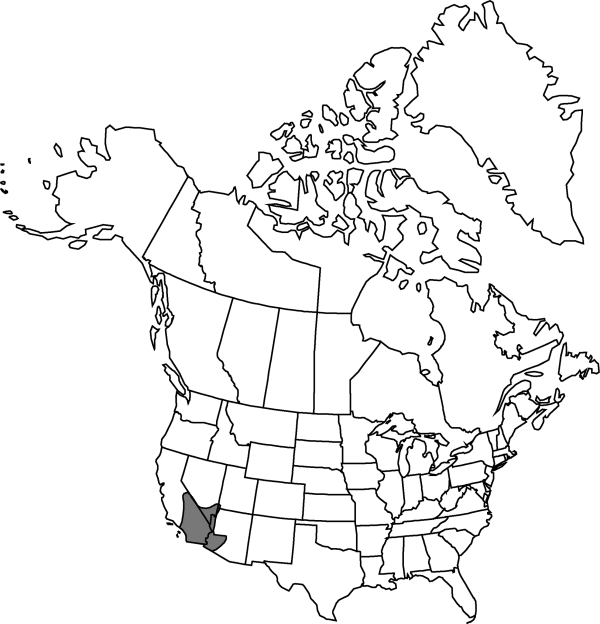Difference between revisions of "Abronia villosa"
Amer. Naturalist 7: 302. 1873.
FNA>Volume Importer |
RevisionBot (talk | contribs) m (Bot: Adding category Revised Since Print) |
||
| (9 intermediate revisions by 3 users not shown) | |||
| Line 8: | Line 8: | ||
}} | }} | ||
|common_names=Desert sand-verbena | |common_names=Desert sand-verbena | ||
| + | |special_status={{Treatment/ID/Special_status | ||
| + | |code=F | ||
| + | |label=Illustrated | ||
| + | }} | ||
|basionyms= | |basionyms= | ||
|synonyms= | |synonyms= | ||
| Line 17: | Line 21: | ||
}}<!-- | }}<!-- | ||
| − | --><span class="statement" id="st- | + | --><span class="statement" id="st-undefined" data-properties=""><b>Plants </b>annual. <b>Stems</b> decumbent to ascending, often widely spreading, much branched in large plants, forming large, loose mats, elongate, usually with reddish tinge, glandular-pubescent to long viscid-villous. <b>Leaves</b>: petiole 0.5–5 cm; blade deltate-ovate to ovate or elliptic, 1–5 × 1–4.5 cm, margins entire to sinuate and ± undulate, adaxial surface glabrous or glandular-pubescent, abaxial surface glandular-pubescent. <b>Inflorescences</b>: peduncle longer than subtending petiole; bracts lanceolate to lance-ovate, 2.5–11 × 1–3 mm, papery, viscid-villous; flowers 15–35. <b>Perianth</b>: tube pink, 10–35 mm, limb usually magenta, with light eyespot, rarely white, 6–18 mm diam. <b>Fruits</b> usually winged, ± obdeltate in profile, 5–10 × 4–15 mm, indurate, ± rugose-veined, sometimes inconspicuously so; wings 3–5, not folded, without dilations, thin, truncate distally, equaling or extending slightly beyond conic apex of fruit body, interior spongy.</span><!-- |
-->{{Treatment/Body | -->{{Treatment/Body | ||
| − | |distribution= | + | |distribution=Ariz.;Calif.;Nev.;Utah;nw Mexico. |
|discussion=<p>Varieties 2 (2 in the flora).</p> | |discussion=<p>Varieties 2 (2 in the flora).</p> | ||
|tables= | |tables= | ||
| Line 44: | Line 48: | ||
-->{{#Taxon: | -->{{#Taxon: | ||
name=Abronia villosa | name=Abronia villosa | ||
| − | |||
|authority=S. Watson | |authority=S. Watson | ||
|rank=species | |rank=species | ||
| Line 51: | Line 54: | ||
|basionyms= | |basionyms= | ||
|family=Nyctaginaceae | |family=Nyctaginaceae | ||
| − | |distribution= | + | |distribution=Ariz.;Calif.;Nev.;Utah;nw Mexico. |
|reference=None | |reference=None | ||
|publication title=Amer. Naturalist | |publication title=Amer. Naturalist | ||
|publication year=1873 | |publication year=1873 | ||
| − | |special status= | + | |special status=Illustrated |
| − | |source xml=https:// | + | |source xml=https://bitbucket.org/aafc-mbb/fna-data-curation/src/2e0870ddd59836b60bcf96646a41e87ea5a5943a/coarse_grained_fna_xml/V4/V4_131.xml |
|genus=Abronia | |genus=Abronia | ||
|species=Abronia villosa | |species=Abronia villosa | ||
| − | |||
| − | |||
| − | |||
| − | |||
| − | |||
| − | |||
| − | |||
| − | |||
| − | |||
| − | |||
| − | |||
| − | |||
| − | |||
| − | |||
| − | |||
| − | |||
| − | |||
| − | |||
| − | |||
| − | |||
| − | |||
| − | |||
| − | |||
| − | |||
| − | |||
| − | |||
| − | |||
| − | |||
| − | |||
| − | |||
| − | |||
| − | |||
| − | |||
| − | |||
| − | |||
| − | |||
| − | |||
| − | |||
| − | |||
}}<!-- | }}<!-- | ||
| − | -->[[Category:Treatment]][[Category:Abronia]] | + | --> |
| + | |||
| + | [[Category:Treatment]] | ||
| + | [[Category:Abronia]] | ||
| + | [[Category:Revised Since Print]] | ||
Latest revision as of 17:01, 6 November 2020
Plants annual. Stems decumbent to ascending, often widely spreading, much branched in large plants, forming large, loose mats, elongate, usually with reddish tinge, glandular-pubescent to long viscid-villous. Leaves: petiole 0.5–5 cm; blade deltate-ovate to ovate or elliptic, 1–5 × 1–4.5 cm, margins entire to sinuate and ± undulate, adaxial surface glabrous or glandular-pubescent, abaxial surface glandular-pubescent. Inflorescences: peduncle longer than subtending petiole; bracts lanceolate to lance-ovate, 2.5–11 × 1–3 mm, papery, viscid-villous; flowers 15–35. Perianth: tube pink, 10–35 mm, limb usually magenta, with light eyespot, rarely white, 6–18 mm diam. Fruits usually winged, ± obdeltate in profile, 5–10 × 4–15 mm, indurate, ± rugose-veined, sometimes inconspicuously so; wings 3–5, not folded, without dilations, thin, truncate distally, equaling or extending slightly beyond conic apex of fruit body, interior spongy.
Distribution

Ariz., Calif., Nev., Utah, nw Mexico.
Discussion
Varieties 2 (2 in the flora).
Selected References
None.
Key
| 1 | Perianth tubes 10-20 mm; fruits strongly rugose veined | Abronia villosa var. villosa |
| 1 | Perianth tubes 20-35 mm; fruits inconspicuously rugose veined | Abronia villosa var. aurita |